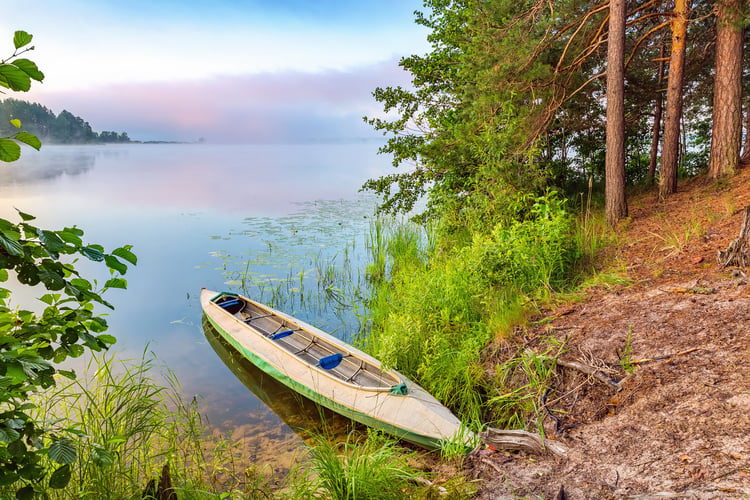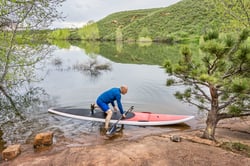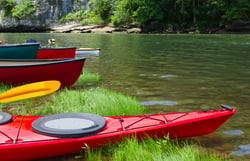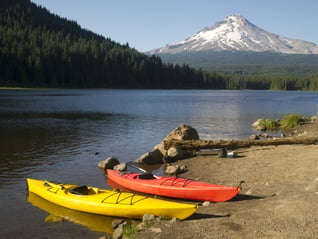
 Many of us in the design industry are re-evaluating our tools when it comes to shoreline recreation programs and ADA compliance. This is mainly driven by the huge increase in stand up paddling sports, kayak fishing, and whitewater kayaking. In fact we are seeing some of the biggest participation increases in the past three years than ever before in these sports.1
Many of us in the design industry are re-evaluating our tools when it comes to shoreline recreation programs and ADA compliance. This is mainly driven by the huge increase in stand up paddling sports, kayak fishing, and whitewater kayaking. In fact we are seeing some of the biggest participation increases in the past three years than ever before in these sports.1
We also know that these sports include a wide range of ages and abilities, and providing universal access is more important than ever. As we have experienced, most existing shoreline recreation facilities were not designed for this user group and have challenges such as shoreline topography, environmental constraints, and cultural resource preservation making it difficult to develop access let alone ADA compliance. This can seem daunting but here are a few tools you can use when designing your facility.

There are two main resources you should use when designing your facility. First, is the Department of Justice's Guidelines and standards for Outdoor Recreation Facilities and developed areas. These guidelines provide the basic building blocks to get the recreation user from the parking lot to the ‘beach’ area proposed for hand launching and the guidelines will also help in your assessment of where to locate the ‘beach’ or hand launch area.
The second helpful resource is the USDA’s Forest Service Outdoor Recreation Accessibility Guidelines. These guidelines provide another source of information and standards that will help you evaluate and design your ADA compliant facilities.
While this might not be seen as a tool, it is imperative to conduct your site investigations and inventory of the existing conditions. This includes topography, in-water conditions, finding the right launch or beach locations, environmental constraints, and verifying any cultural resources that need to be managed or avoided. Once this information is compiled, the designer can quickly assess the best and most practical route to the launch or beach location that meets the ADA requirements. After you get your baseline information it is time to start your access design. A focus on minimizing your impacts by picking the right location for your shoreline amenities is going to be key. When you have the location selected you can use these tools to route your trail back to your day use area or parking lot. One must keep in mind not to exceed trail slopes and lengths, provide resting places, and minimize your disturbance of the environment you are trying to protect. This includes avoiding impacts to existing trees, removal of boulders, or the need to cross severe cut slopes. You will also want to explore routing options as there are always opportunities to overcome site constraints and reduce costs. There are nuances for every project so we encourage you to use the two public agency guidelines and standards to help navigate the existing conditions, protect the environment, and create an enjoyable experience for all abilities.

As paddle sports continue to grow in participation and recreationalist using less urban environments than ever before due to COVID-19, many of these facilities will be added or modified in more remote areas. Accommodating all user groups and abilities is not only the right thing to do but it is fairly simple if you use the tools available. You don’t need expensive and permit-intensive floats, gangways, or other structures to provide this access. Simple access routes that are ADA compliant and provide a stable launch surface will go a long way for a wide variety of disabilities.
I think it is important to remember that recreation opportunities are for everyone and the more inclusive of a design we can provide the more people can participate. So, be creative and use the guidelines and standards. Do your homework - as the more you understand your opportunities and constraints you will find the best adaptive solution to make your facility as inclusive as possible.
Are you utilizing the guidelines mentioned above? Have they been helpful in your designs?
It would be great to hear your thoughts, email me at bcole@mackaysposito.com
Source:

